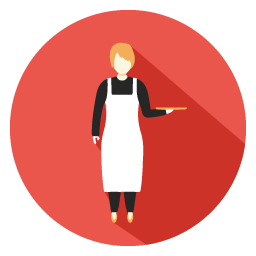When to Follow Customer Expectations – And when to Break Them
Relevant topics Archive, Conversion
Each and every day, package designers, retail planners and online UX experts all face the same question: should you follow customer expectations, or should you break them?
Many experts propose that stores, products and websites should strictly adhere to what the customer expects. This would increase the fluency of the customer experience, leading to increased feelings of positive emotion and – ultimately – purchase behavior.
Nonetheless, there are countless examples of successful concepts that had their rule-breaking philosophy to thank for. From Dell cutting out the middle man in an industry where no one believed people would buy any place else than the retail store, to Craigslist proving discarding many emblematic UX and design rules.
How attention truly works
Our brains have two concurrent modes of attention. Firstly, there’s bottom-up attention. This is the fully automatic type of attention which is guided purely by external design factors such as surface size, position, complexity, color edges, movement and image. Thanks to decades of psychological research, bottom-up attention is quite well understood and has provided marketers with an extensive toolbox of attention-grabbing techniques.
In addition to bottom-up attention, there’s top-down attention. This refers to the more voluntary attention that’s guided by our currently active goals. While being more intensive, top-down attention is capable of swiftly overriding the intuitive urges of our brain’s bottom-up attention.
Especially when we get accustomed to a specific environment, such as a supermarket or website, we get better and better in narrowing our attention exclusively to what we are looking for. If we’re looking for Coca Cola, our eyes are very efficient in locating the red labeled bottles while filtering all other objects vying for our attention. And there’s very little a blue-colored competitor can do about that.
This means that when marketers are able to bend top-down attention in their benefit, they own a powerful competitive advantage. Unfortunately, this more intricate mode of attention is considerably less well-researched. This year, three choice psychologists made a major step in the right direction.
How expectations influence attention
Top-down search strategies depend on knowledge about the likely location of relevant and irrelevant objects. Marketers can therefore improve or hamper top-down control through the predictability of the environment.
By varying the degree of environmental predictability, the researchers found a customer’s mode of attention can be easily swayed. When a store, website or product pack design features its common elements in predictable locations – for instance, displaying a premium brand on eye or top-level shelves – people are more likely to enter the top-down mode. Their attention converges to what they want to find, neglecting everything else. This is wonderful if your product is already on top of the customer’s consideration set, but makes it downright impossible for alternative brands and pieces of information to cut through the clutter.
Luckily, the researchers found a simple solution for these not-so-sought-after objects. When the placement of irrelevant and relevant objects is scrambled, bottom-up attention takes over. This means the customer shifts back to an intuitive attentional focus, which marketers can influence by altering size, position, complexity, color edges, movement and images.
The two-step process of capturing attention towards what the customer doesn’t want to see
This is a vital insight for marketers who face the challenge of attracting attention towards a product or piece of information the customer doesn’t intuitively attend to. For instance, this could refer to a new unknown brand, but also health-related information on the pack that’s often ignored.
In order to refocus attention to the desired direction, the marketer firstly needs to scramble the environment such that the objects are no longer in predictable locations. This will shift gears to bottom-up attention. Secondly, this attentional mode must then be guided to the desired products or design elements by altering the typical factors such as size, contrast, primary focus or including an illusion of movement.
In a time where many products are hiding in plain sight, this study shows how to create the right set of circumstances to recapture a customer’s most valuable resource: attention.
Take-home points
- Choose the right location based on the popularity of your product
- Popular products will be found fastest when they are placed in expected locations
- Boost the attention-grabbing power of less popular products by placing them in unexpected places
Further Reading
-
The Hooters effect: How good-looking waitresses sway our taste buds
From Marylou’s Coffee to Hooters – many food and restaurant concepts have the above-average looks of the serving staff engrained deeply within their brand DNA.
But does it actually work? Do we truly enjoy our food better when it’s handed to us by someone standing high on the attractiveness ladder?
A recent psychological research program – counting an impressive amount of 5 studies –dived into this very question. The researchers investigated in what ways waitresses’ attractiveness spills over into taste expectations and enjoyment.
Their results may surprise you.


